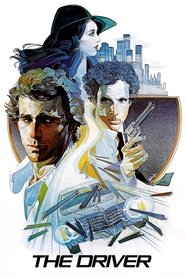Critics misunderstood The Driver when it was first released, who interpreted the cold and unemotional affect of the characters with a lack of developmental depth, instead of representing their dissociation from the society around them. This reading was admittedly encouraged by the fact that the principal actors aren’t given real names and are instead known simply by their archetypes instead: ‘The Driver’, ‘The Detective’, ‘The Player’ and so on. This sort of quasi-Jungian erudition is common in many crime films today (Reservoir Dogs, Kill Bill, Layer Cake, Fight Club, etc.), so critics' misconceptions were somewhat reasonable in 1978.
The plot of The Driver involves the eponymous Driver, a noted getaway driver for robberies in the Los Angeles area. His exceptional talent has thus far prevented him from capture, but the Detective attempts to catch Driver by pardoning a gang if they help convict the Driver through a set-up robbery. To give himself an edge, however, The Driver seeks help from the (femme fatale) ‘Player’ in order to mislead the Detective.
If this all sounds eerily familiar, you would not be wrong. The film was essentially remade by Nicolas Winding Refn as Drive (2011) and in Edgar Wright’s Baby Driver (2017). Yet The Driver offers something that these neon-noir variants do not. In particular, the car chases around Los Angeles are some of the most captivating I’ve ever seen: they aren’t thrilling in the sense of tyre squeals, explosions and boxes flying everywhere, but they feel like wild animals hunting one another. This feels especially so when the police are hunting The Driver, which feels less like an essentially low-stakes game of cat and mouse than a pack of feral animals working loosely together — a gang who will tear apart their prey if they find him. I can't recall the last time I felt genuine suspense during a car sequence. And in contrast to the undercar neon glow of the Fast & Furious franchise, the urban realism of the The Driver’s LA metropolis contributes to a sincere feeling of artistic fidelity.
To be sure, all of this is present in the otherwise excellent Drive, where the chase scenes do really communicate a credible sense of stake. But the substitution of The Driver’s grit with Drive’s soft neon tilts it ever so slightly towards being that common affliction of all crime movies: style over substance. Nevertheless, I can highly recommend watching The Driver and Drive together as tells you a lot about the disconnected socioeconomic practices of 1980s compared to the 2010s. More than that, however, the pseudo-1980s synthwave soundtrack of Drive captures something crucial to analysing the world of today. In particular, these sounds from the past filtered through the present brings to mind the increasing role of nostalgia for lost futures in the here and now, where temporality and pop culture references are almost exclusively citational and commemorational.
A rewatch highlighted Bruce Dern's amazing performance as a cruel, cocksure sheriff transplanted into the urban environment. And the laconic, almost mannered, dialogue was both mesmerising and strangely beautiful.
Synopsis: The Driver specializes in driving getaway cars for robberies. His exceptional talent has prevented him from being caught yet. After another successful flight from the police a self-assured detective makes it his primary goal to catch the Driver. He promises pardons to a gang if they help to convict him in a set-up robbery. The Driver seeks help from The Player to mislead the detective.

